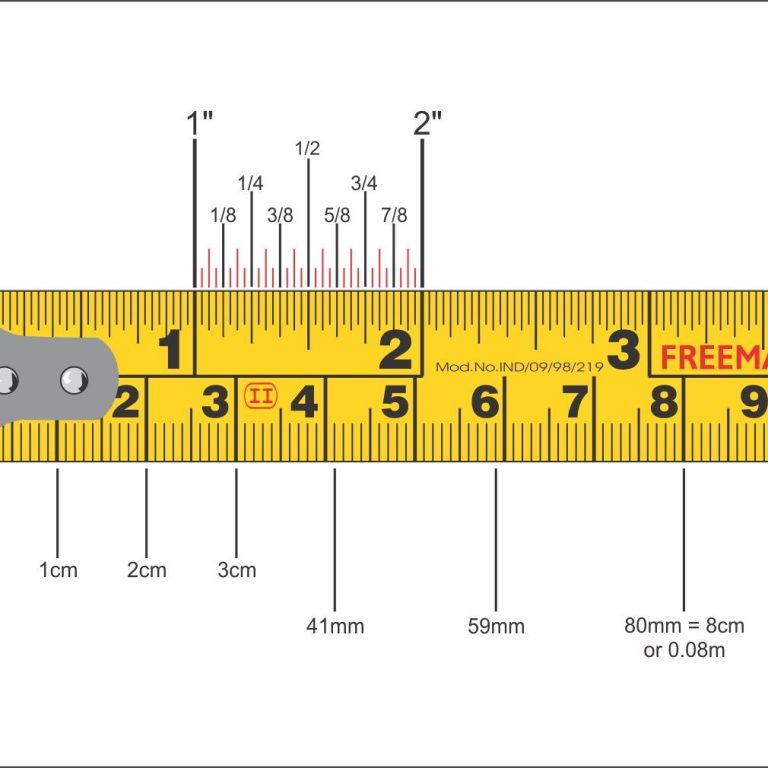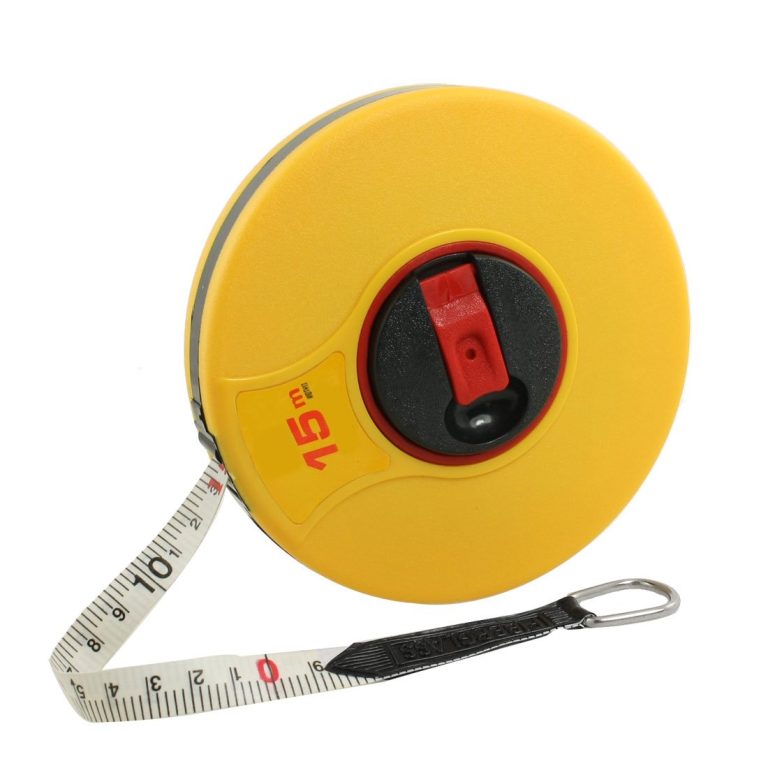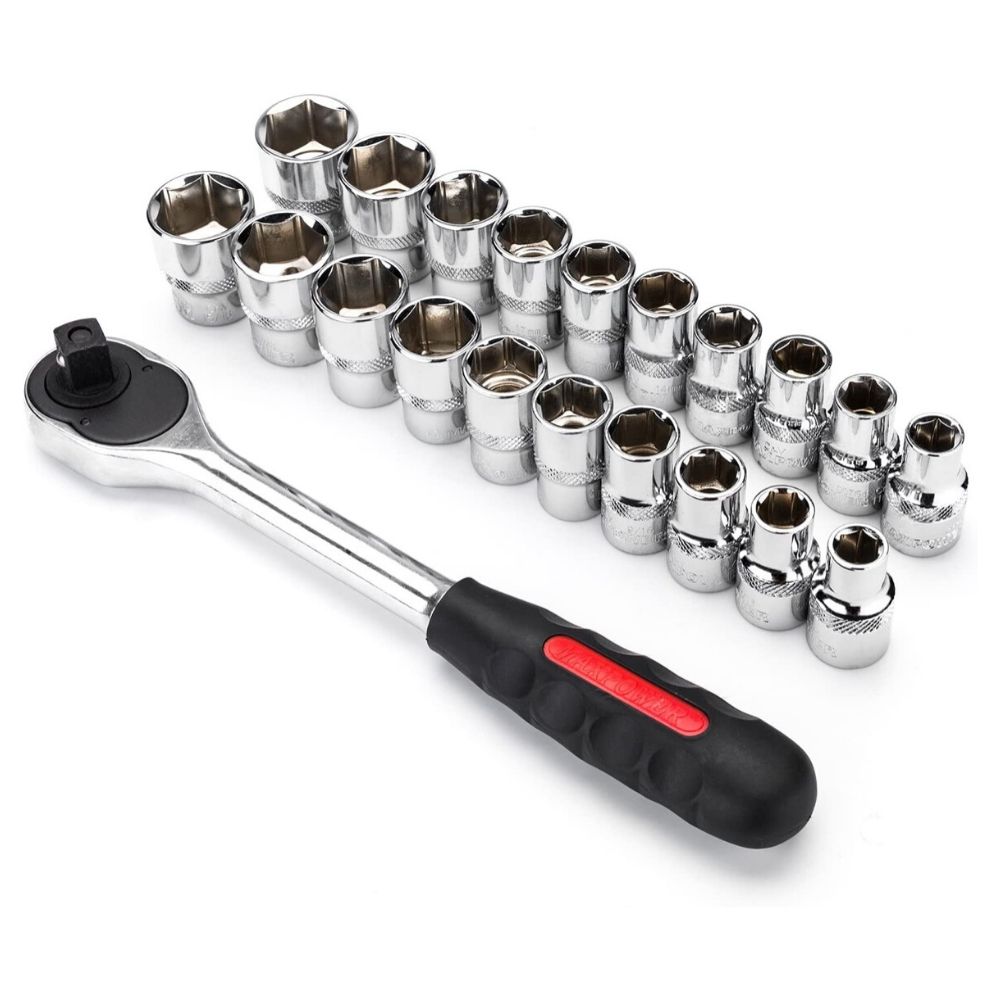
A Beginner’s Guide to Understanding and Using a Socket Wrench
What is a Socket Wrench?
A socket wrench is a tool for tightening or loosening nuts and bolts. It has a ratcheting mechanism that lets you turn the wrench without removing it from the bolt. This makes the job quicker and easier. The wrench comes with a set of socket heads, often in different sizes. You choose the size that fits snugly over the nut or bolt. This ensures a good grip and reduces the chances of slipping or rounding the edges.
When using a socket wrench, you attach a socket to the wrench’s head. Then, you fit it onto the bolt or nut. By moving the handle back and forth, the ratchet rotates the socket, turning the bolt or nut with it. Because of the ratchet, you can keep the socket in place on the nut while you move the handle. It’s handy for working in tight spaces where a regular wrench wouldn’t fit or where you don’t have a full range of motion. Socket wrenches are versatile and can be used for a wide variety of tasks around the house, in the garage, or at work on construction sites.
It’s important to use the right size socket for the job to prevent damage to the bolt or the tool. The sockets are typically made of hardened steel, which helps them withstand the torque applied during fastening operations. Overall, a socket wrench set is an essential toolkit for DIY enthusiasts, mechanics, and anyone who needs to assemble or repair machinery or equipment.
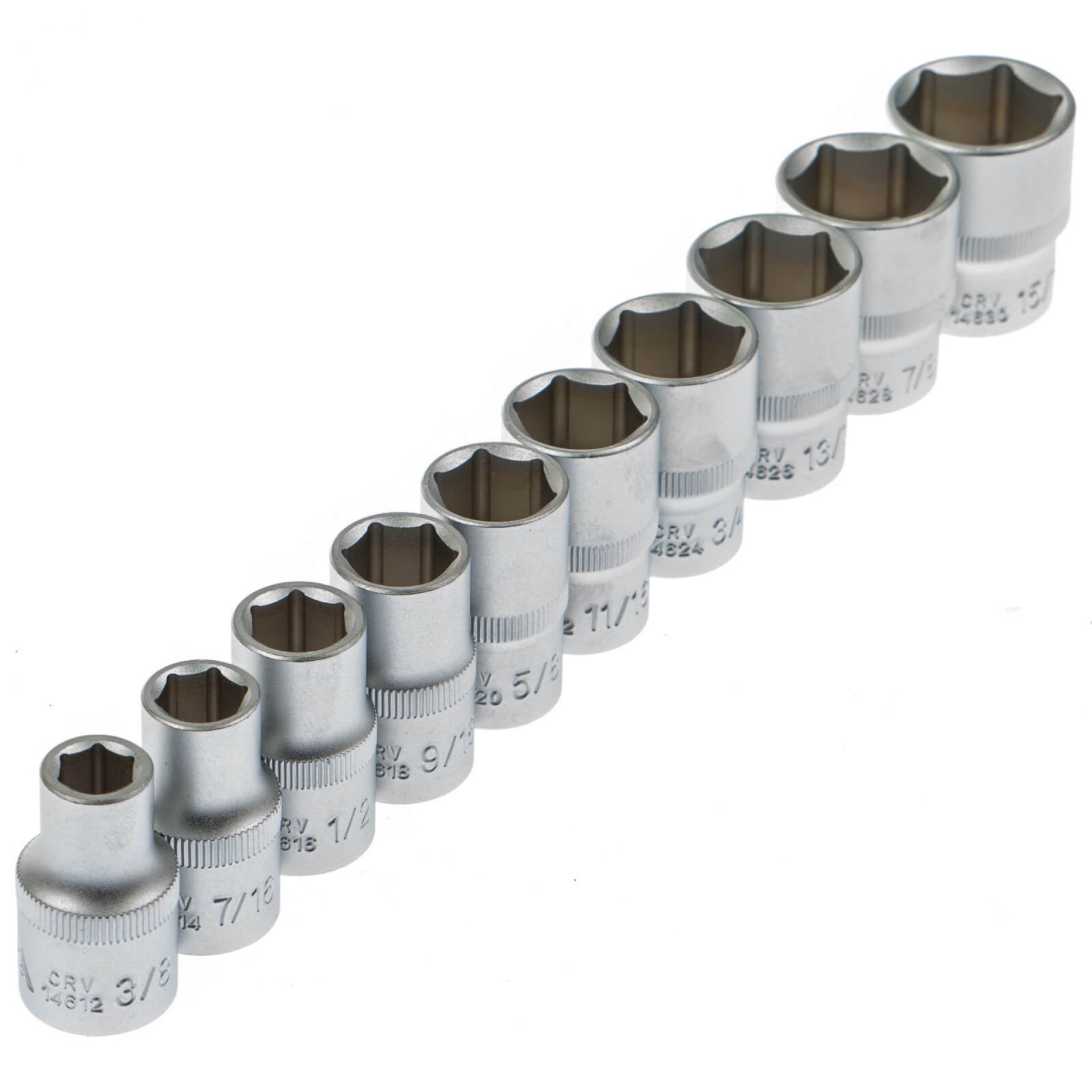 Different Types
Different Types
Knowing the different types of socket wrenches can be helpful when tackling various tasks. Below are the main varieties you might come across:
Standard Socket Wrenches
These are the staple in most toolkits. They come with a set of sockets in various sizes, usually measured in metric or SAE (inch) units. Standard socket wrenches are suited for general use around the home or basic mechanical work.
Impact Socket Wrench
Impact socket wrenches are designed for use with powerful impact tools. They’re made of more robust materials to withstand high levels of torque without cracking. These are ideal for automotive work or jobs that need a bit more force.
Adjustable Socket Wrenches
These wrenches come with an adjustable socket that can fit a range of nut and bolt sizes. This feature makes them versatile for tasks that don’t require precise sizing and can save space in your toolbox.
Flex-head Socket Wrenches
Flex-head wrenches have a pivoting head that allows for maneuverability in tight spaces. This flexibility makes it easier to reach fasteners that are not aligned straight with the wrench handle.
Pass-through Socket Wrenches
Pass-through wrenches do away with the solid top found on standard sockets. This allows for longer bolts to pass through the socket, making it a useful addition for specific specialized tasks.
T-Handle Socket Wrenches
T-handle wrenches provide a longer handle for a better grip and extra leverage. They offer improved control for the user and are especially useful for tasks that require more precision.
Each type of socket wrench has its application and choosing the right one depends greatly on the task at hand. When purchasing a socket wrench, consider the tasks you plan to use it for and select the types that best address those needs.
How to Use a Socket Wrench
Using a socket wrench correctly can make your work faster and less straining. Here are simple steps to follow:
- Select the Correct Socket Size: Match the socket to the nut or bolt size for a snug fit.
- Attach the Socket: Snap the socket onto the wrench’s square drive securely.
- Position the Wrench: Place the socket over the nut or bolt, ensuring it sits well.
- Set the Ratchet Direction: Most wrenches have a small lever to switch the turning direction.
- Turn the Wrench: Move the handle back and forth; the ratchet mechanism will do its work.
- Maintain Contact: Keep the socket connected to the nut or bolt as you ratchet.
- Final Tightening or Loosening: Once loose/tight, you may need to spin the fastener by hand.
For best results, pull the handle toward you rather than pushing away, as it prevents accidental slips and is better for your leverage. Always ensure that your hands are clean and dry for a firm grip on the handle. Additionally, when working with a socket wrench, avoid using excessive force which could cause the tool to slip or break.
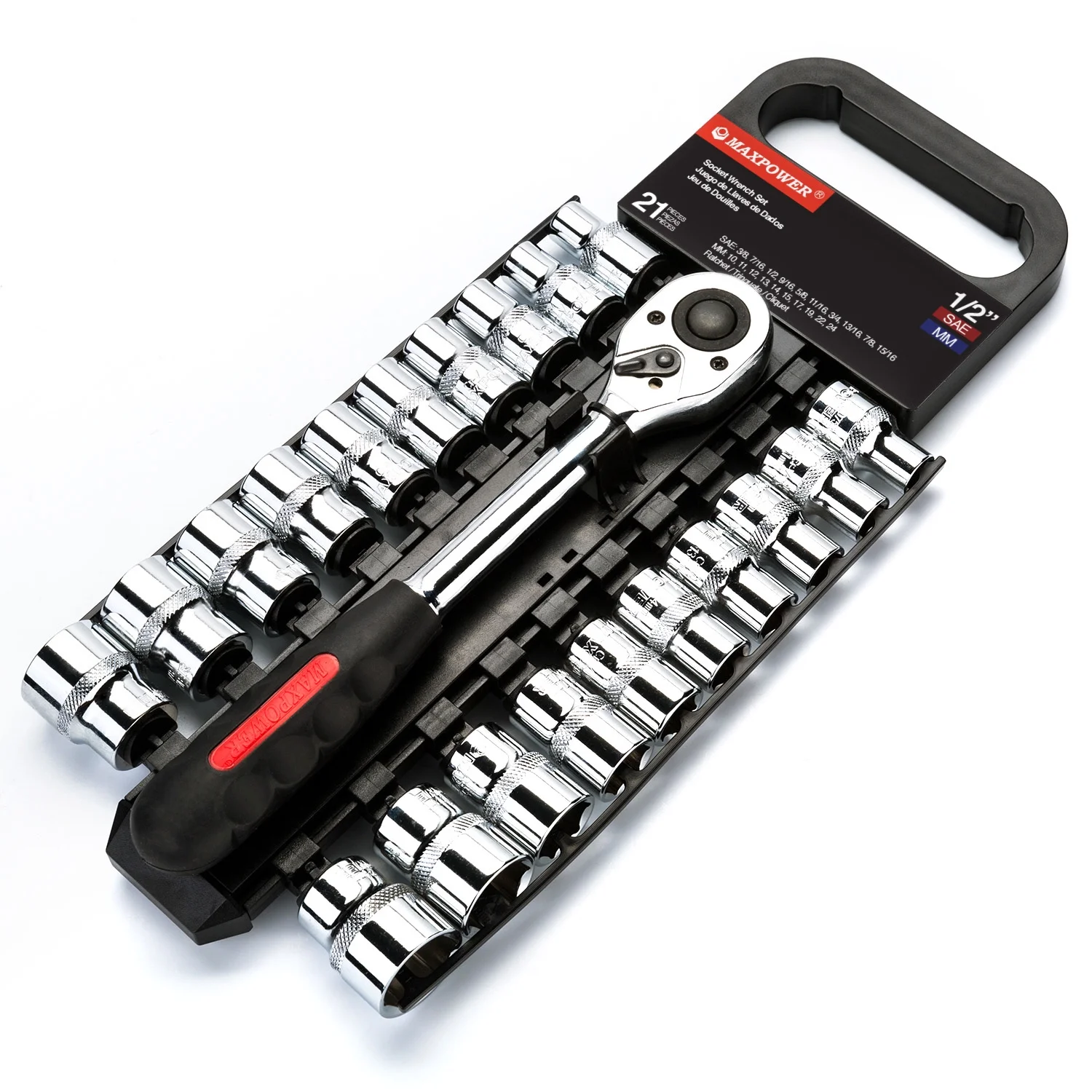 Components of a Wrench Set
Components of a Wrench Set
A complete socket wrench set consists of several parts. These parts work together to make your job easier.
Socket: This is the hollow cylinder that fits over the nut or bolt. They come in different sizes.
Ratchet: The ratchet handle is the tool’s core. It lets you turn the socket using a back-and-forth motion.
Extension Bars: These help reach nuts or bolts that are deep or hard to access.
Universal Joint: This part allows the socket to turn at different angles. It’s good for tight spots.
Adapter: Adapters let you use sockets of one drive size with ratchets of another. They increase versatility.
Handle Drive: You connect sockets to this part of the ratchet. It’s usually square-shaped.
Case: A sturdy case keeps all parts together and protects them when not in use.
Make sure your set has all these parts for a complete toolkit. With the right components, your socket wrench set becomes a powerful ally in any task involving nuts and bolts.
Advantages of Using
Using a socket wrench offers several benefits that make it a favored tool for many tasks. The advantages range from operational efficiency to ergonomic design. Here are some of the key benefits:
- Increased Productivity: Socket wrenches have a ratcheting mechanism that allows for continuous motion without the need to reposition the tool. This saves time and increases work speed.
- Versatility: A standard socket wrench set comes with multiple socket sizes. This enables you to work with different sizes of nuts and bolts, making it a multipurpose tool for various tasks.
- Accessibility in Tight Spaces: The compact design and the ability to attach extension bars means you can reach fasteners in tight or awkward spots with ease.
- Reduced Wear on Fasteners: The precise fit of the sockets reduces the risk of damaging the edges of nuts and bolts. This careful engagement ensures the longevity of both the fasteners and the tool.
- Enhanced Leverage: The long handle of a socket wrench provides better leverage, making it easier to loosen or tighten fasteners with less effort.
- Comfort: Socket wrenches typically have ergonomic handles. These handles are made to fit comfortably in your hand, reducing fatigue and the possibility of injury.
Each benefit contributes to the effectiveness and pleasure of handling a socket wrench. Whether you’re a professional mechanic or a DIY enthusiast, the advantages of using a socket wrench make it a must-have tool in your toolkit.
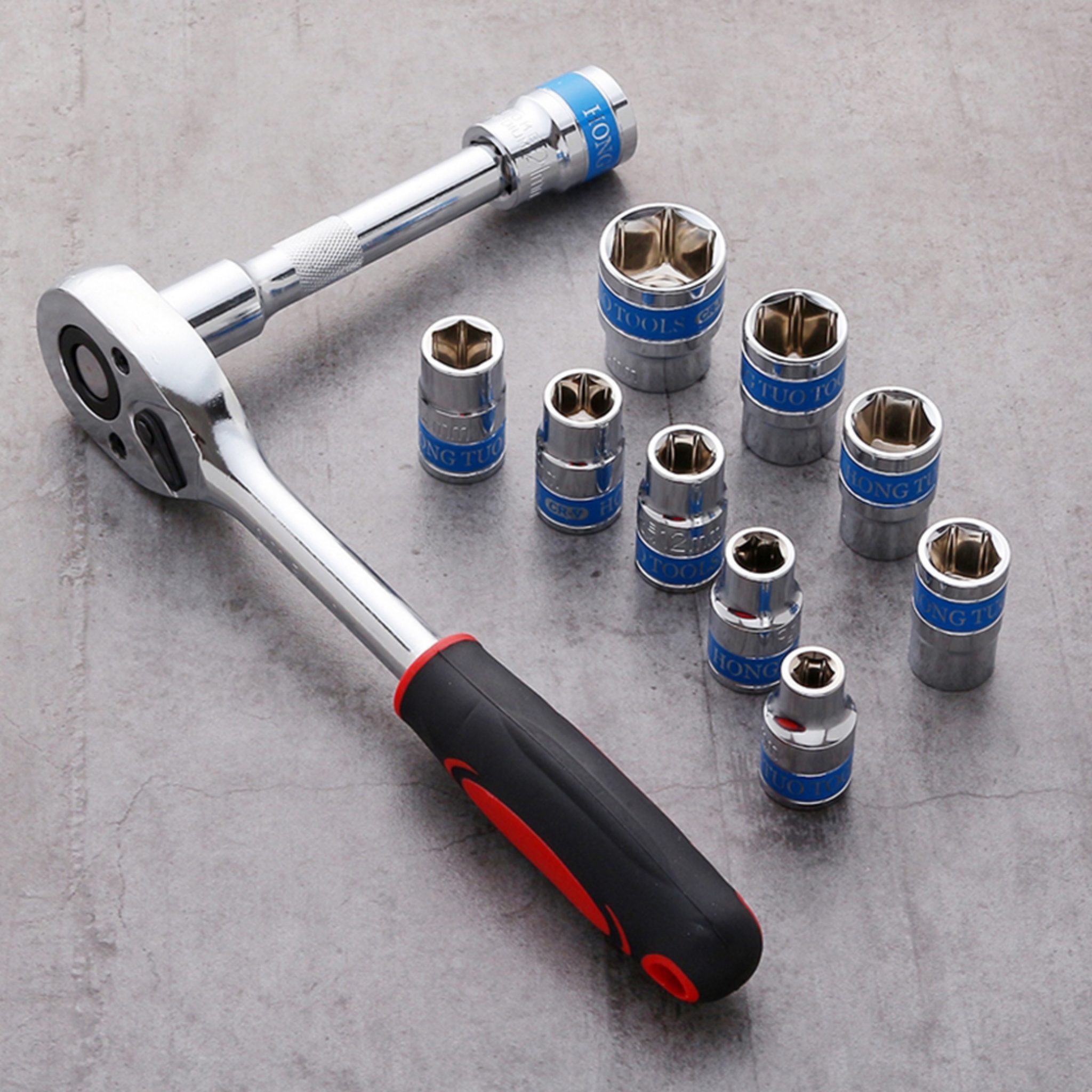 Tips for Maintaining
Tips for Maintaining
To keep your socket wrench set in top condition, follow these essential tips:
- Regular Cleaning: Wipe your socket wrench and sockets with a clean, dry cloth after each use. Remove any dirt or grease to prevent rusting.
- Lubrication: Apply a light coat of oil on the ratchet mechanism occasionally. This will keep it moving smoothly and prevent corrosion.
- Check for Wear: Inspect your sockets and ratchet regularly for signs of wear or damage. Replace parts that show excessive wear to ensure safety and reliability.
- Proper Storage: Always store your socket wrench set in its case when not in use. This protects it from moisture and dust that can cause damage over time.
- Avoid Overloading: Do not use pipes or other extenders on the wrench handle for extra leverage. This can overload and break the tool.
- Use Correctly: Make sure you’re using the right size socket for the nut or bolt. Forcing the wrong size can damage both the tool and the fastener.
Maintaining your socket wrench set ensures it will be ready and reliable whenever you need it. Regular care extends the life of your tools and avoids the frustration of damaged equipment during important tasks.
Common Mistakes to Avoid
To get the best out of your socket wrench, avoid these common pitfalls:
- Using Incorrect Socket Size: One frequent error is not matching the socket to the nut or bolt. Ill-fitting sockets slip and damage fasteners.
- Over-tightening: Applying too much force can strip threads or break bolts. Use the wrench’s leverage, not brute strength.
- Ignoring Ratchet Direction: Make sure the ratchet is set to tighten or loosen. The wrong direction won’t engage the mechanism correctly.
- Forgetting Extension Bars: For deep or recessed bolts, skipping extension bars can make the task harder. Use them when needed.
- Misusing the Tool: A socket wrench is not a hammer or pry bar. Such misuse can damage the tool.
- Neglecting Maintenance: Dirt and rust can cause the ratchet to jam. Regular cleaning and oiling are essential for proper function.
- Improper Storage: Leaving your wrench out can expose it to elements that degrade its quality. Store in a dry, clean place.
- Overloading the Handle: Using pipes for added leverage can break your wrench. Stick to the handle’s intended use.
By avoiding these common mistakes, you’ll extend the life of your socket wrench and make your work more efficient.
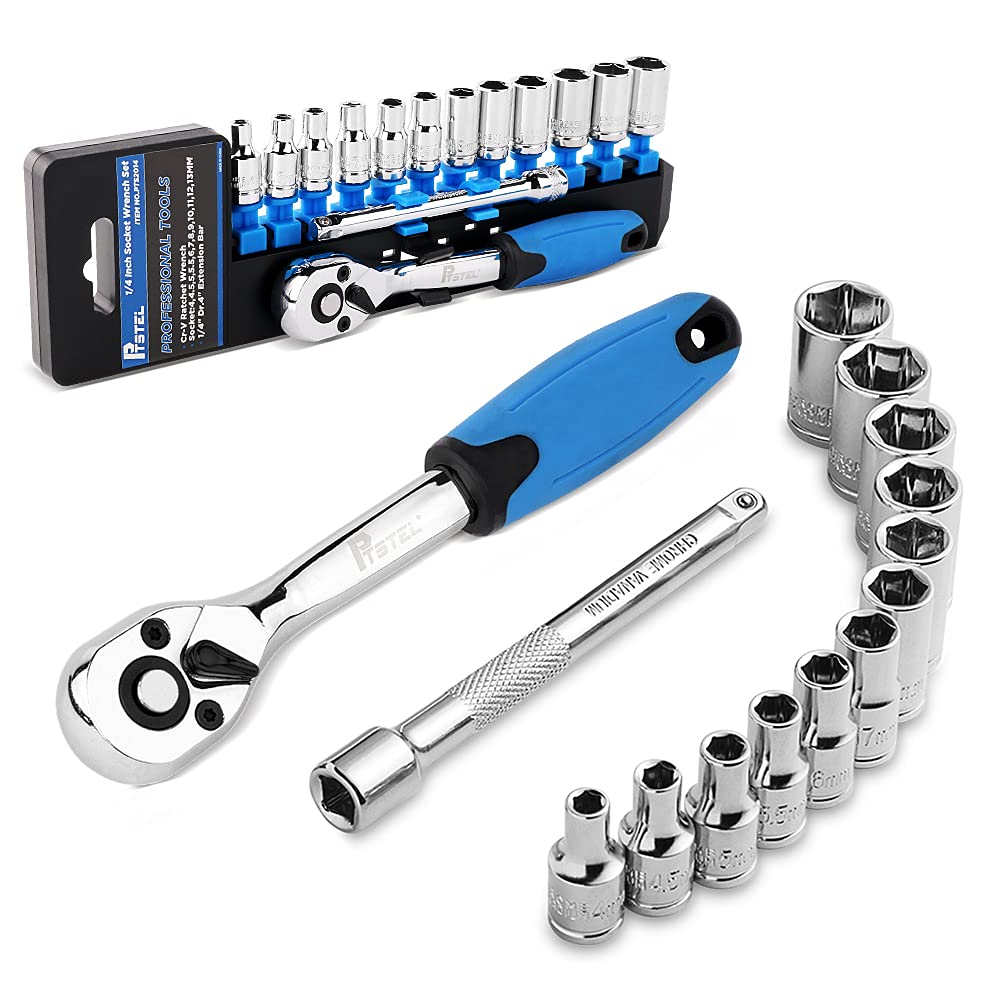 Where to Buy Wrenches and What to Look For
Where to Buy Wrenches and What to Look For
Finding the right place to buy a socket wrench set is as vital as knowing how to use it. Whether you’re a seasoned professional or a home DIYer, here are options where you can purchase them and what you should consider when making your selection:
- Local Hardware Stores: These are great for hands-on shopping. You can feel the weight and grip of the socket wrenches and get advice from knowledgeable staff. Look for stores with a good range of tools and brands.
- Online Retailers: Sites like Amazon, eBay, or specialty online tool shops offer convenience and variety. Read reviews to gauge the quality and suitability of the sets for your tasks. Check for return policies and warranties.
- Tool Specialty Stores: These shops usually offer higher-end or professional-grade tools. Staff can provide expert advice tailored to your specific needs. Ensure they have a selection that fits your intended use and budget.
- Garage Sales or Second-hand Shops: If you’re on a tight budget, you might find used socket wrench sets here. Inspect the tools for wear and rust before buying. Negotiate for the best deal.
When shopping for a socket wrench set:
- Quality of Construction: Look for wrenches made from high-strength steel. They should feel sturdy and have a clean finish.
- Socket Sizes: Make sure the set includes a range of sizes that you will commonly use. Check for both metric and SAE (inch) measurements.
- Ratchet Mechanism: Test the smoothness of the ratchet’s movement. It should be easy to switch directions and have a good number of teeth for fine adjustments.
- Additional Features: Consider sets with flex-heads or extensions bars for versatility. Pass-through sockets could also be beneficial for certain projects.
- Brand Reputation and Reviews: Do some research on brands and look for those with positive feedback. Established brands often ensure better quality and offer warranties.
- Price: Compare prices across different sellers, but don’t compromise quality for cost savings. Consider it an investment for long-term use.
 Conclusion
Conclusion
In summary, the socket wrench is a fundamental tool that offers unmatched versatility and efficiency for a wide array of tasks, from automotive repairs to home improvement projects. By understanding the different types of socket wrenches, their essential features, and proper usage techniques, you can select and utilize the best socket wrench to enhance your productivity and achieve professional-quality results.
Investing in a high-quality socket wrench set ensures that you are well-equipped to handle any challenge that comes your way. Moreover, incorporating advanced techniques and staying updated with the latest innovations can further maximize the potential of your socket wrench, making it a cornerstone of your toolkit.
Whether you are a seasoned professional or a DIY enthusiast, mastering the use of a socket wrench can significantly improve your efficiency and the quality of your work. Embrace the power and precision of the socket wrench, and transform the way you approach your projects, ensuring that you always have the right tool for the job.
